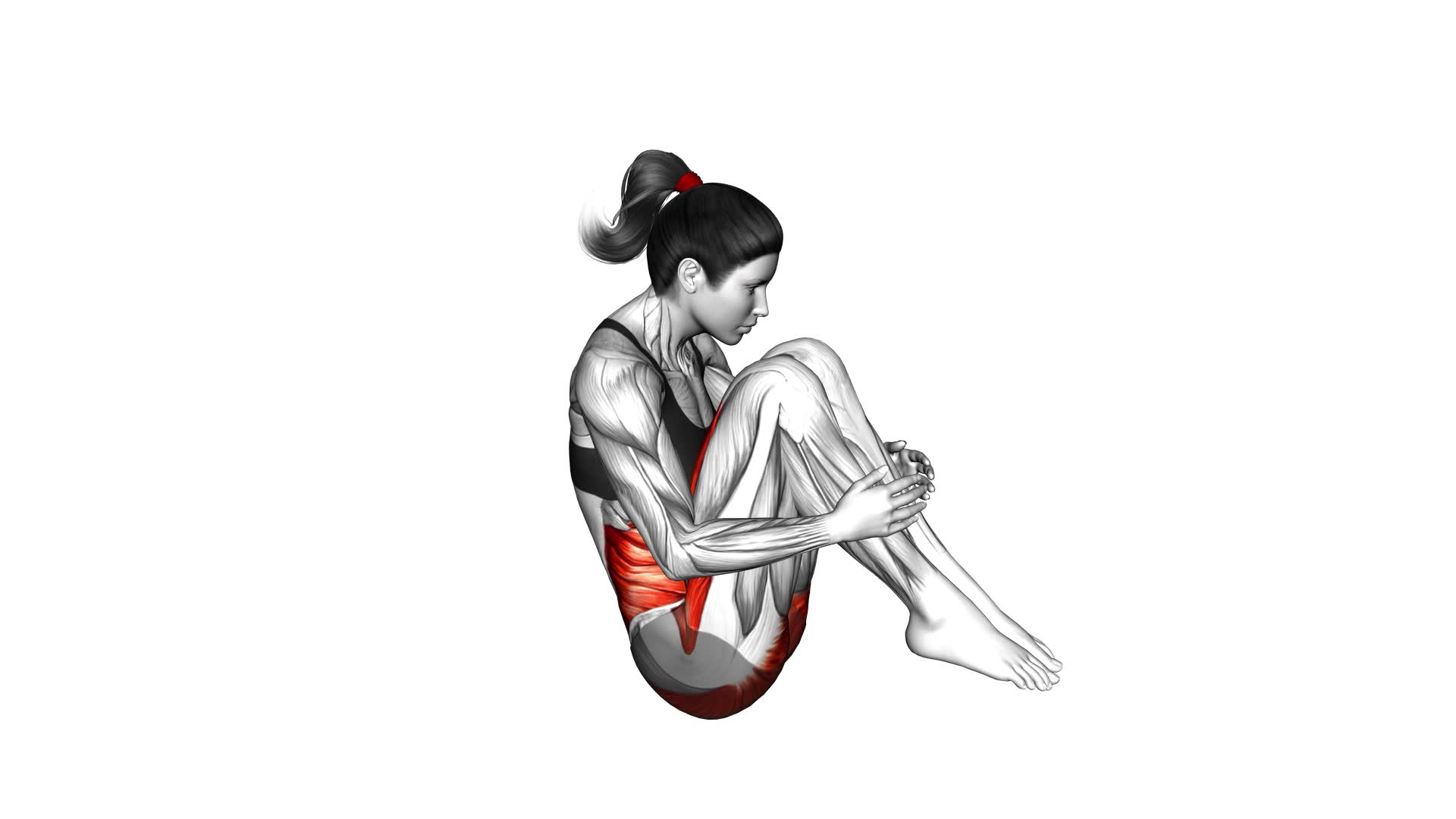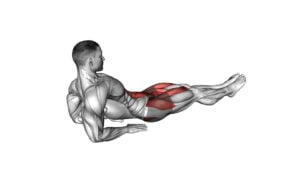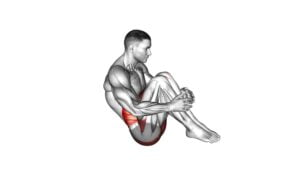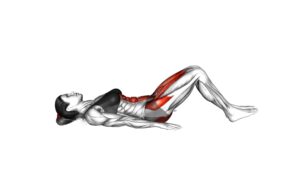Lying Tuck Crunch (female) – Video Exercise Guide & Tips

Get ready to tone your abs with the Lying Tuck Crunch. In this video exercise guide, we'll show you how to properly perform this effective move. Whether you're a beginner or advanced, there are modifications for all fitness levels.
Watch This Exercise Video
Avoid common mistakes and learn helpful tips to incorporate the Lying Tuck Crunch into your workout routine. Get ready to feel the burn and strengthen your core.
Let's get started!
Key Takeaways
- The Lying Tuck Crunch tones abdominal muscles.
- The exercise contributes to injury prevention.
- It improves core strength.
- The Lying Tuck Crunch targets the rectus abdominis and engages the obliques and hip flexors.
Benefits of the Lying Tuck Crunch
To maximize your workout, the lying tuck crunch offers a range of benefits for toning your abdominal muscles. This exercise not only helps you achieve a sculpted midsection but also contributes to injury prevention and improves core strength.
The lying tuck crunch targets the rectus abdominis, the muscle responsible for creating those coveted six-pack abs. By engaging this muscle group, you can effectively strengthen and tone your core, leading to improved stability and balance in your daily activities.
In addition to toning your abs, the lying tuck crunch also aids in injury prevention. By strengthening your core, you create a solid foundation that supports your spine and reduces the risk of back injuries. A strong core also helps improve your posture, alleviating strain on your neck and shoulders.
Furthermore, the lying tuck crunch engages multiple muscle groups, including the obliques and hip flexors. This full-body activation not only enhances your overall strength but also improves your athletic performance in activities such as running, jumping, and lifting.
Incorporating the lying tuck crunch into your workout routine won't only help you achieve your desired abdominal definition but also provide you with a strong and resilient core, helping to prevent injuries and improve your overall fitness level.
Equipment Needed for the Exercise
To perform the lying tuck crunch exercise, you'll need minimal equipment. Here are the workout accessories you'll need:
- Exercise mat: A comfortable, non-slip mat will provide support for your back and prevent any discomfort during the exercise. It will also protect your body from the hard floor.
- Stability ball: This large inflatable ball adds an extra challenge to the lying tuck crunch. By placing your feet on the ball and rolling it in towards your body, you engage your core muscles even more. Make sure to choose a ball that's the right size for your height.
- Dumbbells: Although not necessary, holding dumbbells during the lying tuck crunch can increase the intensity of the exercise. By adding resistance, you'll work your abdominal muscles even harder.
These three items are all you need to perform the lying tuck crunch effectively. However, if you don't have access to any of these equipment, there are alternative exercises you can try that target the same muscle groups.
Now, let's move on to the next section to learn about the proper form and technique for the exercise.
Proper Form and Technique for the Exercise
Start by lying on your back with your knees bent and feet flat on the floor. Place your hands behind your head, interlacing your fingers. This is the starting position for the lying tuck crunch exercise.
To perform the exercise with proper form and technique, engage your core and exhale as you lift your shoulder blades off the floor. Keep your elbows wide and your chin slightly tucked in. As you crunch, imagine bringing your ribcage towards your pelvis. Hold the contraction for a moment and then slowly lower your upper body back down to the starting position.
To avoid common mistakes, make sure to keep your lower back pressed into the floor throughout the entire movement. Avoid pulling on your neck or using your arms to lift your upper body. Focus on using your abs to initiate the movement.
Modifications and variations can be made to suit your fitness level. If you're a beginner, you can start by performing the exercise with your hands resting on your thighs instead of behind your head. For a more advanced variation, you can hold a weight plate or dumbbell on your chest while performing the exercise.
Remember to always listen to your body and choose the variation that challenges you without causing any pain or discomfort.
Modifications and Variations for All Fitness Levels
Modify and vary the lying tuck crunch exercise to suit your fitness level. Whether you're a beginner or an advanced exerciser, there are modifications and variations that can challenge you appropriately. Here are three options to consider:
- Beginner Modifications: If you're new to the lying tuck crunch, start by keeping your feet on the ground and focusing on the upper body movement. This will help you build core strength and stability before progressing to more advanced variations.
- Advanced Modifications: Once you've mastered the basic lying tuck crunch, you can make it more challenging by lifting your feet off the ground and straightening your legs. This engages your lower abdominals and adds an extra level of difficulty.
- Variation with Resistance: To further intensify the exercise, you can add resistance by holding a dumbbell or medicine ball against your chest while performing the tuck crunch. This increases the workload on your core muscles and enhances the overall effectiveness of the exercise.
Common Mistakes to Avoid While Performing the Exercise
While performing the lying tuck crunch exercise, it's important to avoid common mistakes in order to maximize its effectiveness and prevent injury. One common mistake to avoid is using momentum to lift your legs instead of engaging your core muscles. This can reduce the effectiveness of the exercise and increase the risk of straining your lower back.
Another mistake is lifting your head and neck off the ground during the crunch. This can put unnecessary strain on your neck and lead to discomfort or injury. It's also important to avoid pulling on your neck with your hands, as this can strain your neck muscles and potentially cause injury.
To avoid these mistakes, focus on engaging your core muscles and using controlled movements throughout the exercise. If you find that the lying tuck crunch is too challenging or causes discomfort, there are alternative exercises you can try. These include modified versions of the exercise, such as performing the crunches with your knees bent or using a stability ball for added support.
Tips for Incorporating the Lying Tuck Crunch Into Your Workout Routine
To effectively incorporate the lying tuck crunch into your workout routine, focus on engaging your core muscles and maintaining controlled movements throughout the exercise. Here are three tips to help you get the most out of your abdominal workouts:
- Start by lying flat on your back with your legs extended and your arms by your sides. Bend your knees and bring them towards your chest, lifting your feet off the ground. This is your starting position.
- As you exhale, engage your core and slowly lift your upper body off the ground, bringing your knees towards your chest. Keep your lower back pressed into the floor and avoid using momentum to swing your legs upward. Focus on using your abdominal muscles to control the movement.
- Pause for a moment at the top of the crunch, feeling the contraction in your abs. Then, slowly lower your upper body and legs back to the starting position while inhaling.
Remember to perform the lying tuck crunch with proper form and avoid straining your neck or using your hands to pull yourself up.
Incorporating core exercises like the lying tuck crunch into your routine can help strengthen your abdominal muscles and improve your overall fitness.
Frequently Asked Questions
How Many Calories Can You Burn by Doing the Lying Tuck Crunch?
You can burn calories by doing the lying tuck crunch. This core exercise targets your abs and can help you tone and strengthen your midsection.
The amount of calories burned will vary depending on factors like your weight, intensity, and duration of the exercise.
To increase the calorie burn, you can try different variations of the lying tuck crunch, such as adding a leg extension or using weights.
Can the Lying Tuck Crunch Help in Reducing Belly Fat?
The lying tuck crunch is effective in targeting your lower abdominal muscles, which can help in reducing belly fat.
To achieve optimal results, incorporate the lying tuck crunch into a comprehensive workout routine that includes cardio and full-body strength exercises.
This combination will help you burn calories and build lean muscle, leading to overall fat reduction.
Remember to maintain proper form and gradually increase the intensity for best results.
Is It Safe to Do the Lying Tuck Crunch if You Have Lower Back Pain?
If you have lower back pain, it may not be safe to do the lying tuck crunch. It's important to listen to your body and avoid exercises that aggravate your pain.
Instead, consider modifying the lying tuck crunch by using a stability ball or doing pelvic tilts. These exercises can still target your abdominal muscles without putting strain on your lower back.
Always consult with a healthcare professional before starting any new exercise routine.
How Often Should I Do the Lying Tuck Crunch to See Results?
To see results from the lying tuck crunch, you should do it regularly. But before diving into it, let's talk about the side effects and variations.
The lying tuck crunch can strain your lower back if not done correctly, so be cautious.
As for variations, you can try adding weights or doing it on an exercise ball for an extra challenge.
Can the Lying Tuck Crunch Help Improve Core Strength and Stability?
The lying tuck crunch is a great exercise to improve core strength and stability. By engaging your core muscles, this exercise can help you develop a strong and stable core.
Additionally, there are various modifications you can incorporate to make this exercise more challenging or suitable for your fitness level.
Core exercises, like the lying tuck crunch, have numerous benefits such as improving posture, enhancing athletic performance, and reducing the risk of injury.
Conclusion
In conclusion, the lying tuck crunch is a beneficial exercise that targets the abdominal muscles. It can be performed with minimal equipment and can be modified to suit different fitness levels.
By following proper form and technique, avoiding common mistakes, and incorporating this exercise into your workout routine, you can effectively strengthen your core and improve your overall fitness.
So give it a try and start reaping the benefits of the lying tuck crunch today!

Author
Years ago, the spark of my life’s passion ignited in my mind the moment I stepped into the local gym for the first time. The inaugural bead of perspiration, the initial endeavor, the very first surge of endorphins, and a sense of pride that washed over me post-workout marked the beginning of my deep-seated interest in strength sports, fitness, and sports nutrition. This very curiosity blossomed rapidly into a profound fascination, propelling me to earn a Master’s degree in Physical Education from the Academy of Physical Education in Krakow, followed by a Sports Manager diploma from the Jagiellonian University. My journey of growth led me to gain more specialized qualifications, such as being a certified personal trainer with a focus on sports dietetics, a lifeguard, and an instructor for wellness and corrective gymnastics. Theoretical knowledge paired seamlessly with practical experience, reinforcing my belief that the transformation of individuals under my guidance was also a reflection of my personal growth. This belief holds true even today. Each day, I strive to push the boundaries and explore new realms. These realms gently elevate me to greater heights. The unique combination of passion for my field and the continuous quest for growth fuels my drive to break new ground.







